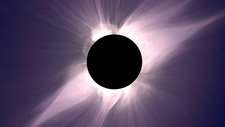Light Energy

TEKS Objective
Students will identify and discuss how different forms of energy such as light, heat, and sound are important to everyday life.
Essential Understanding
The student knows that energy, force, and motion are related and are a part of their everyday life.
Science Background
What is Energy? Annenberg Learner (website) - Differentiates between the scientific meaning of “energy,” vs. its broad interpretation among the general public, and explains different forms and sources of energy.
What is Energy?
Annenberg Learner, www.learner.org
What is Energy? U.S. Energy Information Administration (website) - Basic information about the many forms of energy.
What is Energy?
U.S. Energy Information Administration, www.eia.gov
Signature Lesson
Energy for Life: National Energy Education Development Project (PDF) - Students seek to answer the question, “Must plants have energy from the sun to live?”
Energy for Life
National Energy Education Development Project, www.need.org
- Supporting Lessons
- Extensions
- Assessment Ideas
- Literature Connections
- Related
TEKS - Additional Resources
Supporting Lessons
Colors and Light: National Energy Education Development Project (PDF) - Investigate the question, “Do some colors absorb more sunlight than others?”
Colors and Light
National Energy Education Development Project, www.need.org
Sun Power to Change Colors: The NEED Project (PDF) - Students discover if/how light energy from the sun changes colored construction paper placed outdoors.
Elaboration Lessons and Extensions
Solar Heating and Designing of a Solar Cooker: Education.com (website) - Information on solar energy and instructions for making sun tea.
Solar Heating and Designing of a Solar Cooker
by Janice VanCleave, Education.com
Assessment Ideas
Ask the following questions to assess students’ understanding of light energy. Have them provide their answers verbally or write explanations in their science notebooks.
- From where does our planet, Earth, receive the majority of its light and heat energy?
- Why is light energy an important part of our everyday lives?
Literature Connections
The Energy We See: A Look at Light. Boothroyd, Jennifer. (ISBN-13: 9780761360926)
The Sun: Our Nearest Star. Branley, Franklyn M. (ISBN-13: 9780064452021)
Additional Resources
Our Very Own Star, The Sun: NASA (PDF) - Introduce the sun as one of the most important objects in the sky. Read the story to students to reinforce the fact that the sun provides light and heat energy to our planet, Earth.
Our Very Own Star, The Sun
NASA, www.nasa.gov
Edison and the Light Bulb: Science NetLinks (website) - Introduces students to the realm and power of inventions, and helps them to understand the impact of inventions on people and society.
Edison and the Light Bulb
Science NetLinks, www.sciencenetlinks.com
Sunblock Investigation: PBS (website) - Students set up a simple experiment to determine how sunscreen counteracts light and heat energy produced by the sun.
TEKS Navigation
Grade 1
Need Assistance?
If you need help or have a question please use the links below to help resolve your problem.

Comments